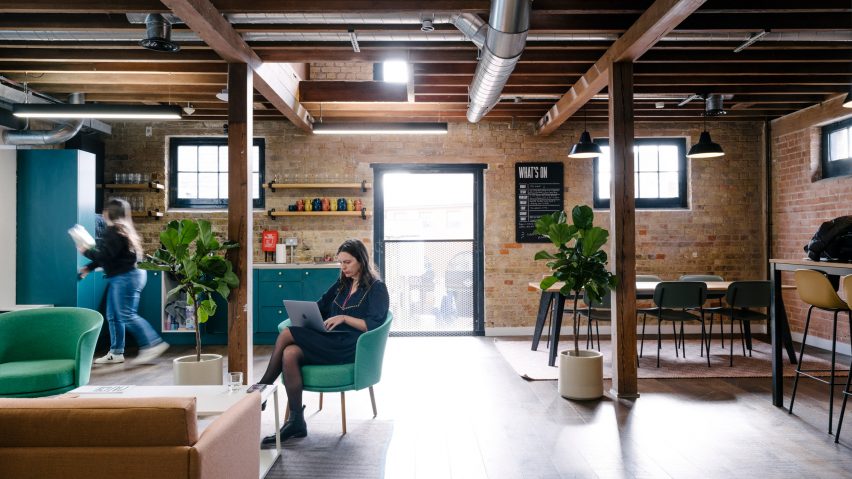
Co-working venture Patch offers "an exciting alternative to your kitchen table" says Paloma Strelitz
Co-working spaces that allow people to "work near home" can reinvigorate local towns and high streets, explains Paloma Strelitz of new workspace brand Patch in this interview.
Previously a co-founder of Turner Prize-winning architecture collective Assemble, architect Strelitz is now creative director and head of product for Patch, which is creating co-working spaces in satellite towns rather than in city centre locations.
Patch hopes to attract people who, since the pandemic, are re-evaluating their work-life balance and are less willing to commute.
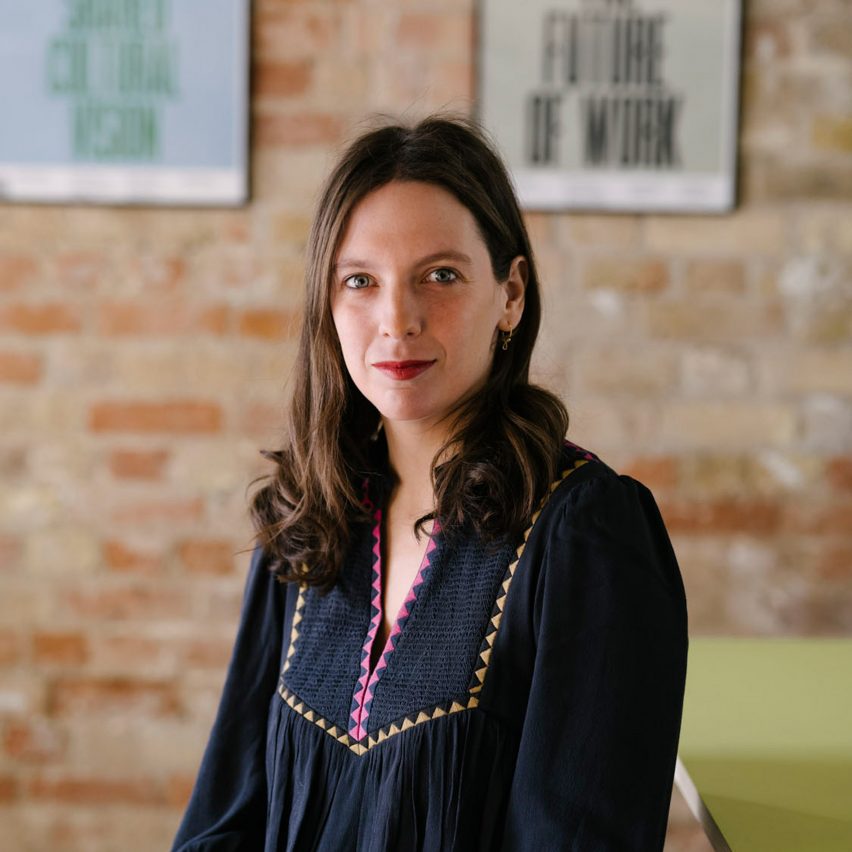
"I think there has been a big shift in what people want from work and life through Covid, with people reevaluating their career paths and deciding that now is the time to set up on their own," said Strelitz.
The architect, who is also a judge for Dezeen Awards 2022, believes these workspaces can boost the local economies of towns and neighbourhoods in the commuter belt.
Reinvention of the high street
"There are huge opportunities around the reinvention of the high street," she told Dezeen.
"We want people to be on their local high streets in the middle of the day, supporting local businesses instead of spending their money in places like Canary Wharf."
Strelitz sees working near home as a superior option to both commuting and working from home, as it offers the best of both worlds. It means keeping home and work lives separate, but retaining the flexibility of remote working.
"We're saying to people, we are an exciting alternative to your kitchen table," Strelitz said.
Improved work-life balance
"Your kitchen table might be great once or twice a week, but there are huge positives of being part of a community like Patch," she continued.
"At a personal level, it contributes to a better balance between work and life, enabling people to achieve their professional goals and spend more time with friends, family and in their local community."
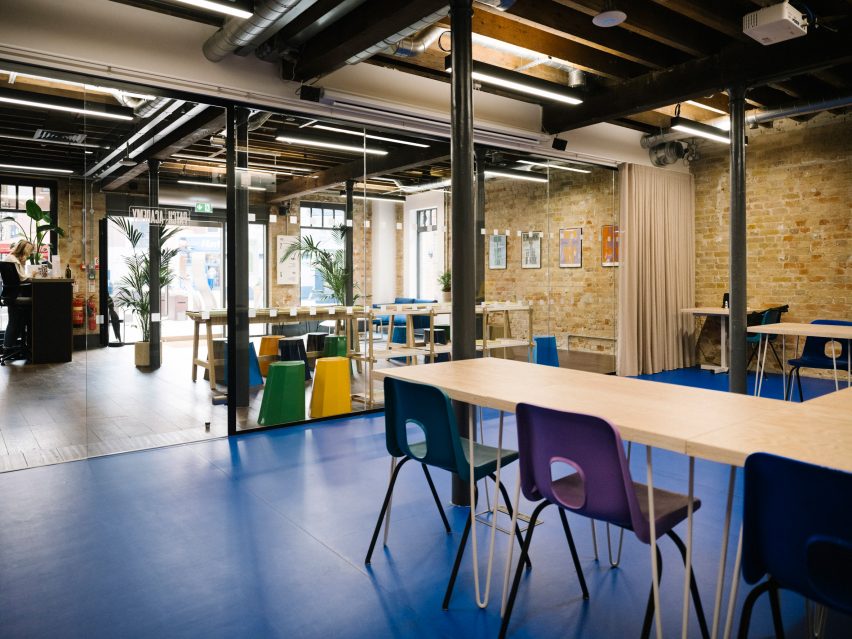
Patch was founded by entrepreneur Freddie Fforde and recently opened its first co-working space in Chelmsford, a commuter town located 30 miles northeast of London in Essex.
Occupying a converted Victorian brewery, it is designed as a visible presence in the town centre.
As well as workspaces, the venue includes publicly accessible facilities that include a library and learning space, an events space and a flexible cafe/bar. There's also a kid's zone to make life easier for members with children.
"Public access is important; it's important to draw people in and make anything that's shared as visible and celebrated as possible," said Strelitz.
Work near home trend
According to Strelitz, towns like Chelmsford are typically lacking in the provision of high-quality, co-working spaces and cultural venues in the town centre.
"The idea of having quality workspace and an exciting professional community on your local high street is not as common as you might think," she said.
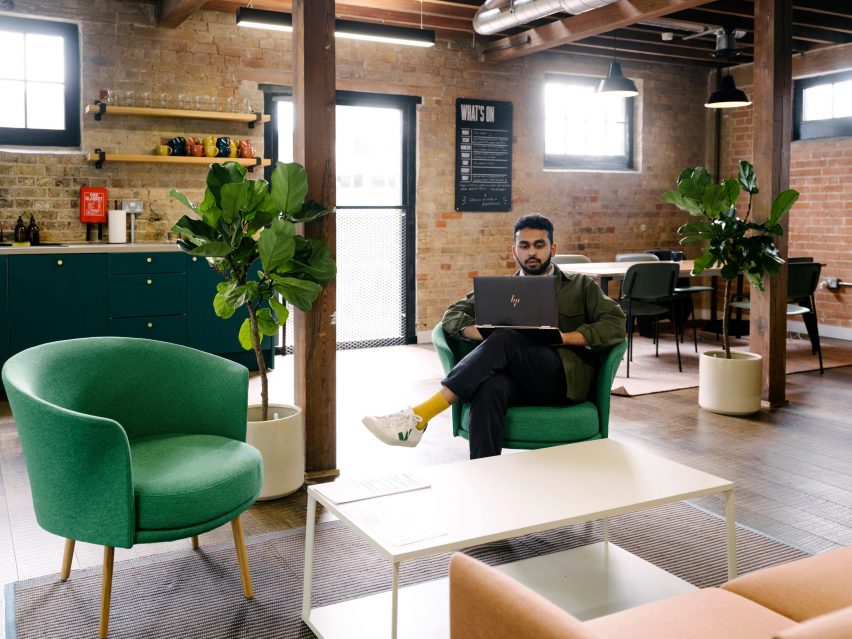
The aim is for Patch Chelmsford to become a prototype for the work-near-home concept. The brand plans to open more venues in other satellite towns in the near future.
"We're looking towards the idea of there being a Patch on every high street; our aim is to become the new anchor of the high street," she said.
Workspace central to placemaking
The design draws on Strelitz's experience with Assemble, which saw her and colleagues create cultural venues that aimed to positively impact local communities.
Projects like temporary canal-side cinema Folly for a Flyover and shared garden Granby Winter Garden broke the mould of how architects can impact placemaking.
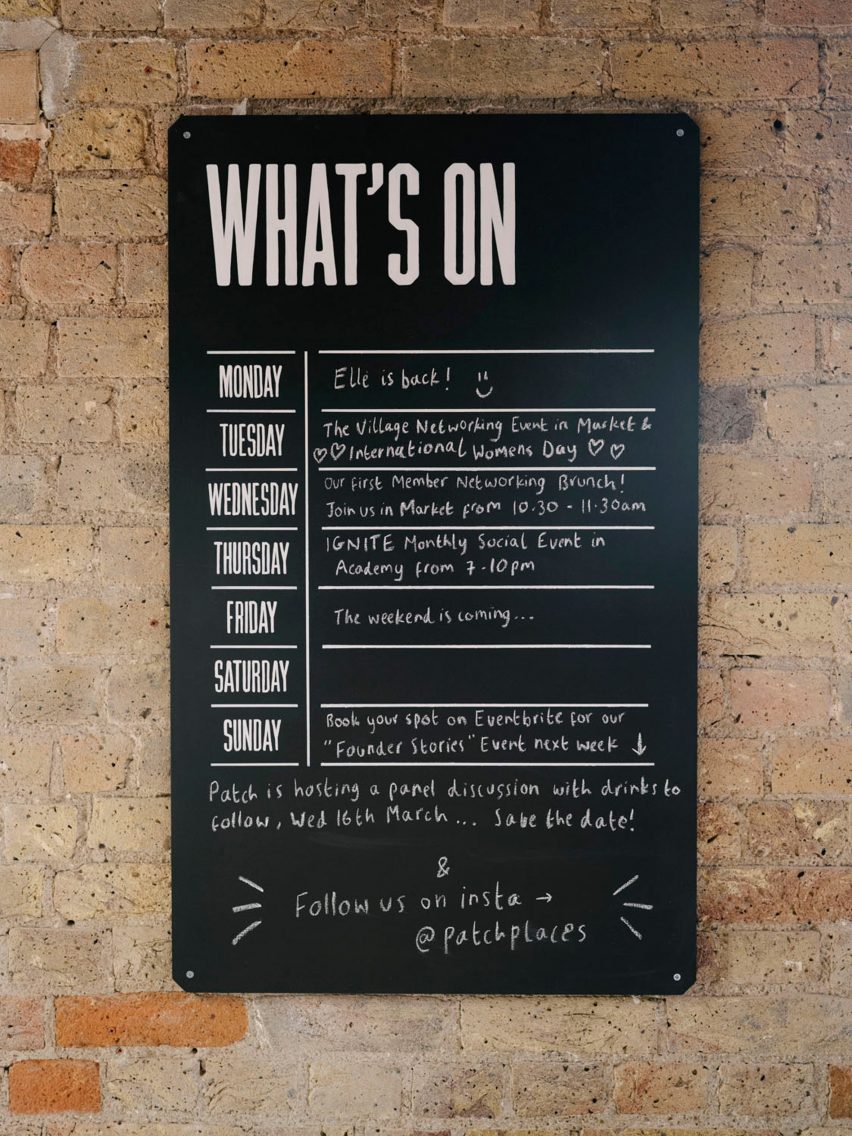
She believes Patch can be equally disruptive, especially as it has a greater ability to scale up than Assemble's projects.
"My projects with Assemble were effectively all independent commissions, but what we're doing with Patch is really learning as we go along and evolving in response."
Read on for an edited transcript of the interview:
Amy Frearson: What is the concept behind Patch?
Paloma Strelitz: Patch is a startup with a vision to create the new ‘work near home' world. That means going to towns and areas outside of central London, particularly places with big residential communities, where people would traditionally commute into the city. We create really exciting spaces on the high street so that people can work closer to home.
Amy Frearson: Can you explain your vision for work near home, and the benefits it can bring?
Paloma Strelitz: Work near home is a vision for a sustainable work ecosystem that gives people access to space, resources and community close to where they live. At a personal level, it contributes to a better balance between work and life, enabling people to achieve their professional goals and spend more time with friends, family and in their local community. It also promotes investment in local economies, from accessible work opportunities to increased footfall for local businesses and high streets. We want people to be on their local high streets in the middle of the day, supporting local businesses instead of spending their money in places like Canary Wharf.
Amy Frearson: Aside from the economic benefits, what opportunities can Work from Home bring to local high streets?
Paloma Strelitz: There are huge opportunities around the reinvention of the high street. Our aim is to find really characterful buildings and turn them into exciting places to work locally. They can also become dynamic, attractive spaces for hosting local cultural events.
In our first space, in Chelmsford, the ground floor is a family of public spaces that includes a reception/library, a flexible events space and a cafe/bar space for the Patch community. In many ways, this is the prototype for how we see Patch and the work near home world growing. We're looking towards the idea of there being a Patch on every high street; our aim is to become the new anchor of the high street. We're looking towards the empty Debenhams buildings and asking, what could work near home look like if it was occupying a former department store? Could it become a more complex ecosystem of uses?
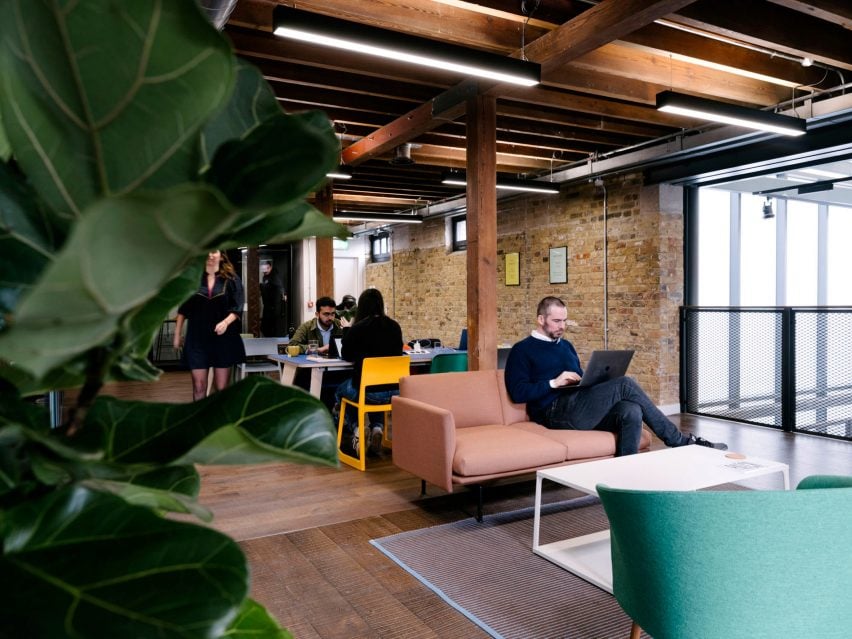
Amy Frearson: How and why did you get involved in Patch?
Paloma Strelitz: I had a brilliant and rewarding experience as a co-founder of Assemble; we worked on some highly bespoke, very meaningful one-off projects. People then started saying things to me like, when is Assemble going to design an airport? I always thought, I'm never going to design an airport. But I was interested in this idea of scale, specifically how you scale impact and reach.
I was then awarded a Loeb fellowship at Harvard, which gave me an amazing opportunity to be immersed in different disciplinary environments and perspectives. It got me thinking about what happens when different kinds of professional worlds come together and how they can learn from each other.
Then I met Freddie Fforde, the founder and CEO of Patch. I read his manifesto and thought it sounded exciting. It felt like a really interesting way to build on the experience I had from Assemble, of creating impactful cultural venues, and bringing in learnings from the startup and tech worlds to create something meaningful and community-driven.
Amy Frearson: What is different about Patch, compared with other co-working spaces outside of London?
Paloma Strelitz: There are a few things to say here. Firstly I think it is important to remember that, while there are a lot of co-working environments in London, that isn't reflective of the rest of the UK. There obviously are exceptions, in other big cities like Manchester, or places like Brighton, but mostly it's not the same picture. You have old-fashioned examples like Regis, normally located right next to the train station with the idea that you'd be wanting to leave that place as soon as possible. What you get a lot more rarely is the idea of the workspace and local industry as central to placemaking. In the places we've been looking at, none had good examples. The idea of having quality workspace and an exciting professional community on your local high street is not as common as you might think.
Secondly, you get some very exciting dynamics when people are drawn together by the communities that they live in, rather than a shared work purpose. There are huge opportunities for collaborative projects or purposes, which is already how we're seeing Patch used. There is a high intensity of local groups looking to, for example, promote women in business in Chelmsford, or to build on the area's cultural vision.
I think there's also a third point around public access to cultural venues, which again is common in central London but not elsewhere. Chelmsford is a good example of a place where there are very few high quality, exciting cultural venues where people can come together and meet. There's a real demand for interesting spaces for people to gather.
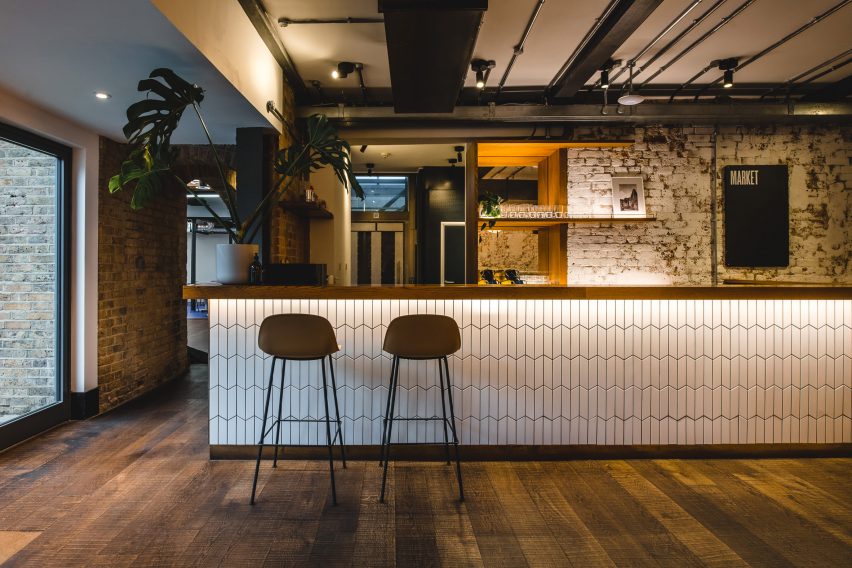
Amy Frearson: What does this kind of workspace look like? How do you create spaces that foster local communities and collaboration?
Paloma Strelitz: Public access is important. Most workspace environments are still fairly private unless you're a paid-for member. It's important to draw people in and make anything that's shared as visible and celebrated as possible. You also have to think about what it means for people to work close to home and what needs they might have. What are their reasons for not wanting to commute? That list is long, but one example is proximity to family. So one thing we're really keen to do is to support people who have families to have a better work/life balance. In our space in Chelmsford we've set up a kid's corner, as we want the workspace to be a place where parents can bring their children and where children also feel welcome.
Amy Frearson: What kind of buildings do you want Patch to occupy?
Paloma Strelitz: We are looking for buildings that have a sense of civic value. Our Chelmsford space is in a former Victorian brewery right in the centre of town. It was previously a restaurant that went out of business, but the story of the building's identity was not being told in that use. For us there's a certain joy in being able to retell that story by sourcing archival images and original beer labels, and then physically opening up that space.
We want to create venues that are enticing and exciting, particularly for people who are less used to co-working. We're saying to people, we are an exciting alternative to your kitchen table. Your kitchen table might be great once or twice a week, but professionally and socially there are huge positives of being part of a community like Patch.
Amy Frearson: Could the Patch model have existed before Covid-19, or do you see it as a direct response to the pandemic shift towards working from home?
Paloma Strelitz: I think we've been on a long journey to this point and Covid just accelerated trends we were already seeing. But there are a huge number of moving parts here. There would always have been ambitious local SMEs (small and mid-size enterprises) looking for spaces to operate in, but now there are also huge numbers of people who would have traditionally commuted five days a week. Anecdotally, I think there has been a big shift in what people want from work and life through Covid, with people reevaluating their career paths and deciding that now is the time to set up on their own.
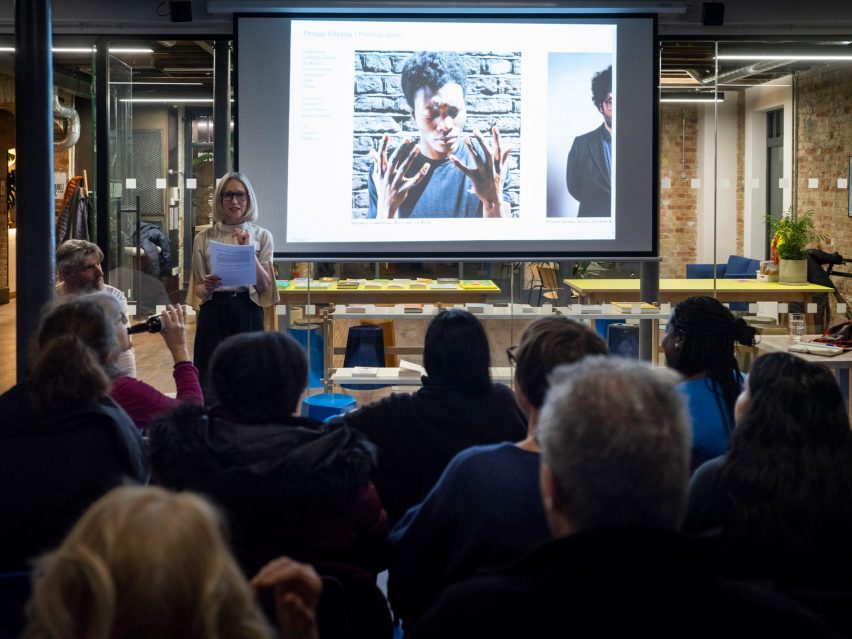
Amy Frearson: Patch's approach is in contrast with established co-working brands like WeWork, who since the pandemic are prioritising high-density, city-centre locations. Could your approach be a risky one?
Paloma Strelitz: We have a pluralistic viewpoint, which is to say there isn't going to be one singular way that people are going to work. I think the future is hybrid. I do see the case for big, central hubs located close to major stations, where people might converge once or twice a week. But I don't think that it's going to be five days a week anymore, so for those people who work for large, centralised companies, what does the rest of their time look like? I think we're going to have a number of new solutions, a mosaic of different workspace offerings. But while companies like WeWork are less interested in the local, we see our interests really aligned with local councils and ideas around decentralisation. We're trying to counteract the endless pull of London.
Amy Frearson: Are you planning to repeat certain elements in each Patch, or do you want each one to feel tailor-made for its location?
Paloma Strelitz: We're still working out the formula. One thing that we're really interested in is how Patch can become a launchpad for local enterprise and new ideas, and retail might be a component of that. One idea is that we work with local independent retailers. Another idea is that we find ways of giving visibility to exciting startups from London that are looking for an audience in a place like Chelmsford. For example, we're partnering with a toy subscription company called Whirli on our kid's corner. For us, this idea of local innovation is really critical.
Amy Frearson: What are your ambitions for Patch going forward?
Paloma Strelitz: Right now we're looking towards our second and third sites, which are not yet confirmed. Each context is going to bring up new opportunities and questions. We think of Patch as a family, which is an interesting analogy because it speaks about things that share the same DNA but might have a radically different identity. What Patch looks like in Chelmsford might be very different to what it might look like in Margate or Guildford. We want to make sure that in each place we're building a platform to celebrate and elevate what's already there. It's about creating spaces that are meaningfully shared but also distinctive.
My projects with Assemble were effectively all independent commissions, but what we're doing with Patch is really learning as we go along and evolving in response. It's a very interesting and different dynamic, particularly if we go back to that earlier point about scale and what it means to do a bigger project. I don't think it's about a physically bigger project, I think it's about a more meaningfully distributed project.